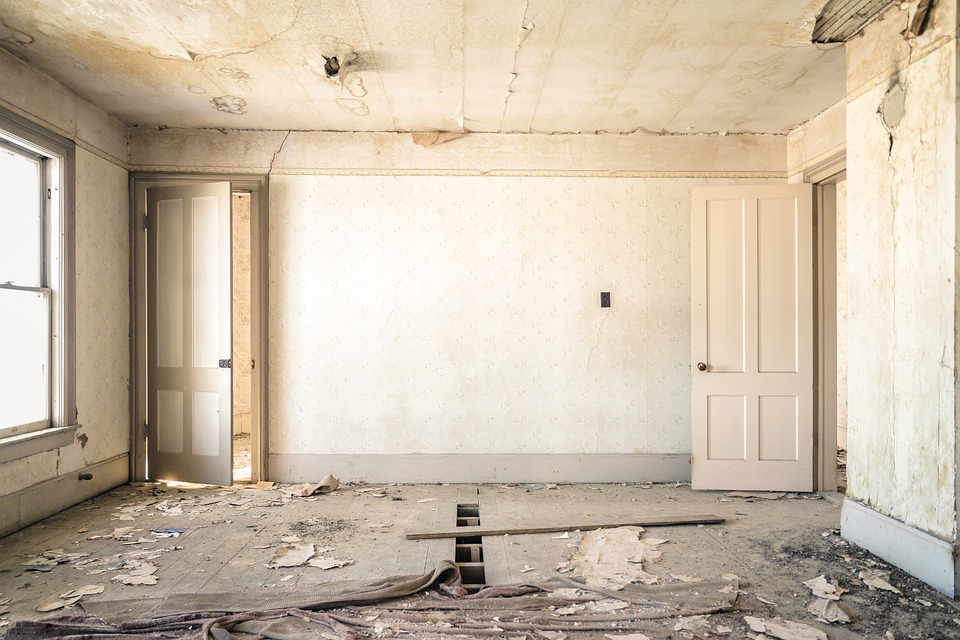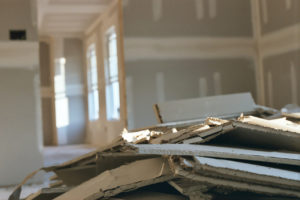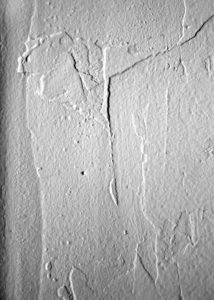Do You Have To Immediately Replace Water-Damaged Drywall?

In the average home, most walls and ceilings are made with drywall. This is a sheet of gypsum-based plaster kept together by paper. While some types of drywall are made with materials that make it more resistant to water, average drywall can be quite susceptible to damage from even small leaks.
Replacing water-damaged drywall is important when it’s being affected by a recent leak, but new homeowners might not think it’s an issue when seeing old discoloration in the walls. No matter how old the stain is, the drywall should be replaced. Weakened drywall can be both a structural issue and a sign that a leak is still there.
Signs Of Water Damage
 When drywall gets slightly wet, it can become discolored and stained. This is mostly a cosmetic issue, but if it comes from behind the wall, it should still be remedied as soon as possible. Both the gypsum material and the insulation behind it can hold moisture for a long time, meaning even a small amount of water can turn into mold. You should have both the drywall and the insulation removed before the problem gets worse.
When drywall gets slightly wet, it can become discolored and stained. This is mostly a cosmetic issue, but if it comes from behind the wall, it should still be remedied as soon as possible. Both the gypsum material and the insulation behind it can hold moisture for a long time, meaning even a small amount of water can turn into mold. You should have both the drywall and the insulation removed before the problem gets worse.
Even small leaks can turn into wider damage. When there’s a leak in the foundation material and moisture remains up against your walls, the walls will start to soak the water up and it will leech through the gypsum. This soaking action is called “wicking”, and the longer the water is left to wick into the drywall, the greater the damage will be.
If the wicking continues to happen, paint or wallpaper on the wall can start bubbling and peeling off. If left to continue, either when a homeowner is unaware or just ignores it, the drywall can begin to crack and crumble, and mold can grow and spread behind the wall. The sagging and buckling can turn the problem into more than just an aesthetic one.
Fixing Water-Damaged Drywall
 Fixing water-damaged drywall caused by a leak starts with resolving the leak. If it’s an internal plumbing issue like a leaky pipe, it may be necessary to turn off your main water supply line to stop the flow of water so that you or a plumber can make the necessary repairs. But the leak could come from an exterior leak, and this means fixing the damage starts with fixing the drainage problem. Your foundation might have a crack that will only get worse.
Fixing water-damaged drywall caused by a leak starts with resolving the leak. If it’s an internal plumbing issue like a leaky pipe, it may be necessary to turn off your main water supply line to stop the flow of water so that you or a plumber can make the necessary repairs. But the leak could come from an exterior leak, and this means fixing the damage starts with fixing the drainage problem. Your foundation might have a crack that will only get worse.
If you see the signs of water damage, check it for moisture with a non-penetrating moisture meter. If you don’t have access to one, you can remove the baseboards and poke the drywall with a screwdriver; if it’s soft, it’s wet, and the leak is continuous.
If there isn’t any moisture and the water damage is old, there’s still a chance that the weakness will return. If you’re unable to locate the source of the leak, have a home inspector or expert make an examination. Don’t let older-looking water stains fool you – the leak could still be a problem in the future, and the damage beneath the surface could spread to other parts of your home.
